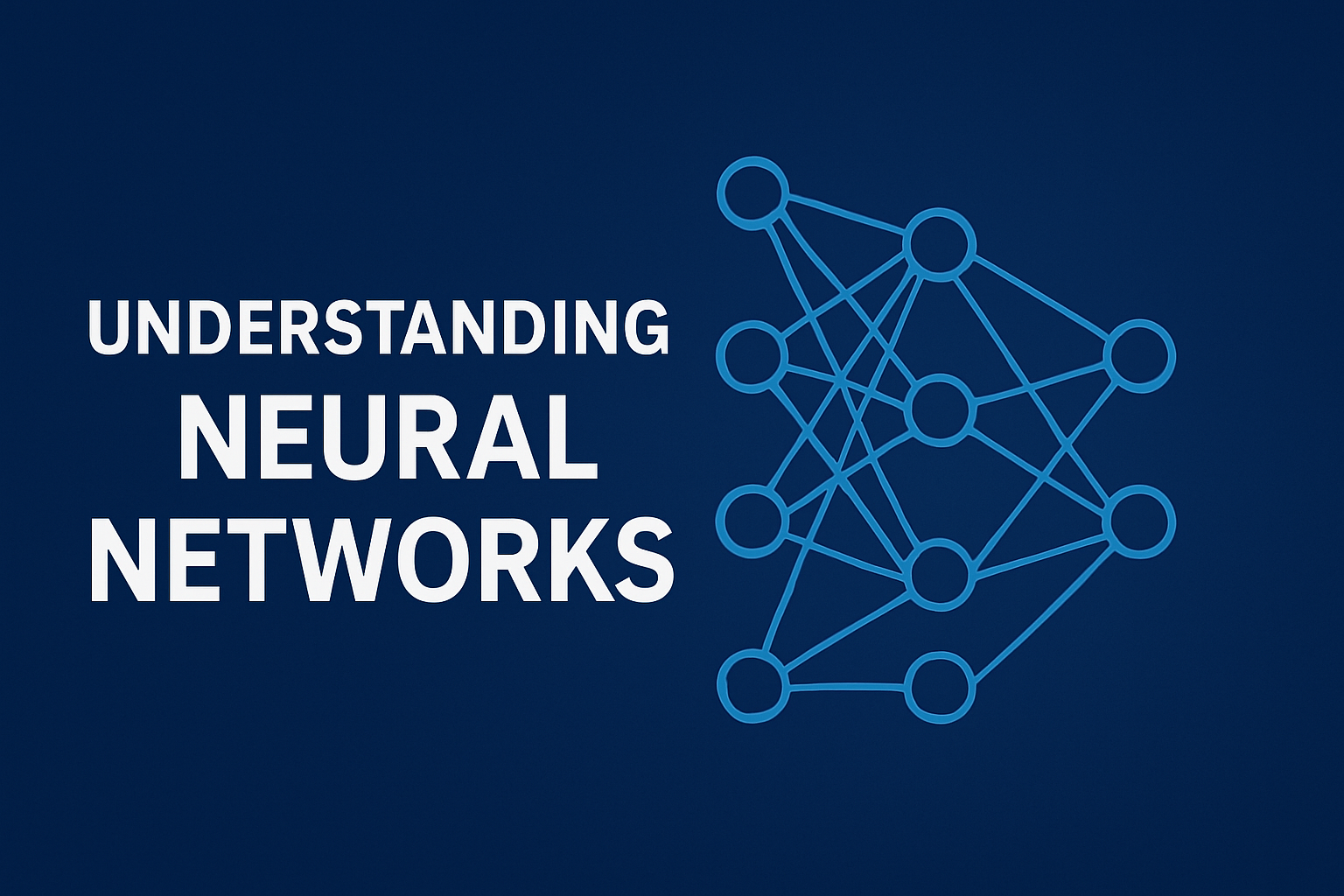Understanding Neural Networks

What Are Neural Networks?
A neural network is a computational model inspired by the structure and function of the human brain. Just as the brain consists of interconnected neurons, a neural network is made up of layers of artificial neurons that transmit signals to each other. These models are capable of learning from data, identifying patterns, and making decisions with minimal human intervention.
Neural networks are a subset of machine learning and the foundation of deep learning, which deals with more complex, multi-layered networks. While the term might sound intimidating, the core concepts behind neural networks are surprisingly intuitive once broken down.
Structure of a Neural Network
At a high level, a neural network is composed of three main types of layers:
-
Input Layer
This layer receives the raw data. Each node in the input layer represents a feature or attribute from the data. For example, if you’re feeding the network an image that’s 28x28 pixels, you’ll have 784 input nodes (one for each pixel). -
Hidden Layers
These are intermediate layers between input and output. They perform the actual computations through a series of weighted connections and activation functions. A network can have one or many hidden layers—networks with many are referred to as deep neural networks. -
Output Layer
This layer provides the final result or prediction. In a classification problem, the output might be the predicted class, such as whether an image contains a cat or a dog.
How Neural Networks Work
Neural networks function by simulating how a brain processes information. Here’s a simplified explanation of the process:
-
Forward Propagation
Data passes through the network from the input layer to the output layer. Each neuron receives input, applies a weight and bias, processes it through an activation function, and passes the result to the next layer. The final output is the network’s prediction. -
Loss Calculation
Once the network makes a prediction, it compares the result to the actual value using a loss function. This function measures how far off the prediction is. -
Backpropagation and Learning
The network uses an optimization algorithm (like gradient descent) to adjust the weights and biases to minimize the loss. This process is known as backpropagation, and it's repeated through multiple epochs until the model's accuracy improves.
Key Concepts and Terminology
To understand neural networks better, it's helpful to become familiar with the following terms:
-
Neuron: The basic unit of a neural network. It receives input, applies a function, and sends output.
-
Weights and Biases: Parameters that the network adjusts during training to make accurate predictions.
-
Activation Function: A mathematical function that determines whether a neuron should “fire.” Common functions include sigmoid, ReLU (Rectified Linear Unit), and tanh.
-
Epoch: One complete pass of the training dataset through the neural network.
-
Overfitting: When a model performs well on training data but poorly on new, unseen data.
-
Regularization: Techniques like dropout or L2 regularization that help prevent overfitting.
Applications of Neural Networks
Neural networks have enabled breakthroughs across a wide range of industries and technologies:
-
Computer Vision: Used in facial recognition, medical imaging, and object detection in self-driving cars.
-
Natural Language Processing (NLP): Powers applications like chatbots, language translation, and sentiment analysis.
-
Speech Recognition: Enables digital assistants like Siri, Alexa, and Google Assistant to understand and respond to spoken commands.
-
Finance: Helps in fraud detection, algorithmic trading, and credit scoring.
-
Healthcare: Assists in diagnosing diseases, analyzing medical images, and predicting patient outcomes.
Deep Neural Networks and Beyond
While basic neural networks are powerful, they often struggle with highly complex data. That’s where deep learning comes in. Deep learning uses deep neural networks (DNNs) with many hidden layers to extract increasingly abstract features from data.
Advanced architectures include:
-
Convolutional Neural Networks (CNNs): Specialized for image data, they detect spatial hierarchies in visuals (edges, shapes, objects).
-
Recurrent Neural Networks (RNNs): Designed for sequence data like time series or text. They maintain memory of previous inputs.
-
Transformers: Revolutionizing NLP, these models (like GPT and BERT) can understand context in language and are the basis for powerful AI tools today.
Challenges of Neural Networks
Despite their potential, neural networks come with challenges:
-
Data Hungry: Neural networks often require large datasets to learn effectively.
-
Computationally Intensive: Training deep networks can be resource-heavy and time-consuming.
-
Interpretability: Neural networks are often seen as “black boxes,” meaning it’s hard to explain why they make certain decisions.
-
Bias: If trained on biased data, neural networks can perpetuate or even amplify those biases.
The Future of Neural Networks
As research continues, neural networks are expected to become more efficient, interpretable, and capable. Future developments include:
-
Neuromorphic Computing: Designing hardware that mimics the brain’s architecture.
-
Explainable AI (XAI): Creating models that can provide transparent, human-understandable justifications for their decisions.
-
Self-supervised Learning: Reducing reliance on labeled data by allowing networks to learn from unlabeled data.

